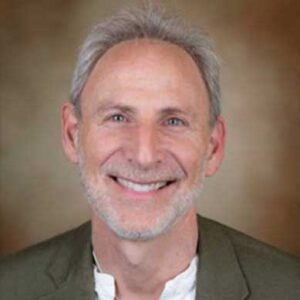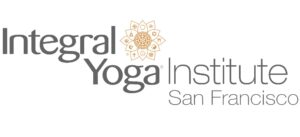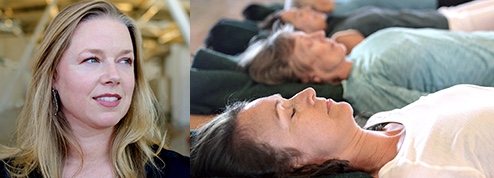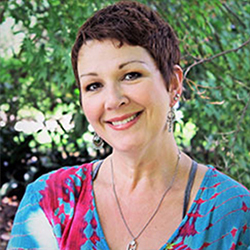Introduction to Yoga Nidra
by Dr. Mark Halpern
Yoga Nidra is the art of conscious deep relaxation. The body is asleep, but the mind is awake and an active participant in the healing process. In this state, you can access the subtle flow of energy, called prana, in the body. One of the goals of this practice is to identify and remove blockages to its flow.
Yoga Nidra is a powerful healing practice for body, mind, and consciousness. Your body is a densely packed field of energy. Through this field, prana, or life energy, flows through the 72,000 different channels described in Yoga. These channels are called nadi. Every thought, every feeling, produces a change in the flow of prana. Disturbances in the flow define our suffering, both physically and emotionally. Prana controls the functioning of our body. When the flow of prana is disturbed, the systems of the body function less than optimally. The practice of Yoga Nidra restores the proper flow of prana throughout the body and mind, allowing the systems of the body to function properly.
Yoga Nidra maximizes the potential of the body and mind to heal itself and can be practiced to support healing from any condition. In a natural, relaxed state, the mind is calm and the body functions properly. As we engage the world of drama, the mind becomes agitated and the physiology of the body is altered. These changed weaken the body. The immune system fails and the body becomes sick. Yoga Nidra restores the mind to a state of calmness and improves the functioning of the immune system.
The importance of deep relaxation to our health and well-being has its origins in Yoga, the world’s oldest system of quieting the mind. As the knowledge spread out of India, it impacted the systems of healing and spirituality around the world. As Yoga teachers came to the United States during the twentieth century, they emphasized the importance of deep relaxation techniques. This significantly influenced the personal growth field and the field of modern psychology. It also became the foundation of some techniques within a branch of psychology called hypnotherapy. From this state of deep relaxation, suggestions can be implanted in the subconscious. Yogis call these suggestions sankulpa, or intention. It is through sankulpa that our personal world and all of our experiences come into existence. Alternative psychologists, often without knowing the proper name of this technique and its broadest implications, were the pioneers of Yoga Nidra in the West. They modified it and called it by a variety of names, included guided or progressive relaxation. Today, the Yoga Therapy community has reclaimed this technique, bringing it back to the practice of Yoga for healing body and mind, for deepening one’s experience of meditation, and for expanding consciousness.
In 1987, after being crippled by a severe autoimmune illness, I spontaneously entered the state of consciousness known as Yoga Nidra. I was crippled and bedridden with severe arthritis, high fever, and other symptoms. Laying in bed, I began to perceive my subtle body and the flow of energy through it. I noticed blockages to the flow and through a combination of what I can best call awareness and intention, I learned how to release those blockages. I monitored the flow of prana in my subtle body and I practiced removing blockages several times each day. With each practice, I observed how the channels through which energy flows stayed open longer and longer. After two weeks, my fever came down and I worked my way back to a wheelchair and eventually back to walking again.
After my fever came down, I lost much of the acute ability to perceive energy. At the same time, I was introduced to several recordings by a psychologist and teacher named Mary Richards. Her recordings reintroduced me to accessing this level of awareness. I then practiced entering into the state of Yoga Nidra two or three times per day for the next five years as my recovery continued. During this time, I restored my strength overcoming severe chronic fatigue and many mild reoccurrences. Since then I have practiced whenever I am tired, feel run-down, or when any illness affects my body. The healing of my body is greatly accelerated by this process.
 Dr. Marc Halpern is the founder and President of the California College of Ayurveda. An internationally respected expert in the field of Ayurveda, Dr. Halpern received the award for best Ayurveda Physician from the Indian Minister of Health and Family Welfare, Dr. Ramdas. He is the co-founder of the National Ayurveda Medical Association and the California Association of Ayurveda Medicine.
Dr. Marc Halpern is the founder and President of the California College of Ayurveda. An internationally respected expert in the field of Ayurveda, Dr. Halpern received the award for best Ayurveda Physician from the Indian Minister of Health and Family Welfare, Dr. Ramdas. He is the co-founder of the National Ayurveda Medical Association and the California Association of Ayurveda Medicine.
Join Dr. Marc Halpern and Dr. Andrea Deerheart for an incredible 2-day Yoga Nidra Personal Retreat
Saturday and Sunday March 4 & 5, 2023 from 9:00 am – 4:00 pm PST (with 90 min. lunch breaks). Sign up and reserve your spot today. Space is limited.
“If you would like to experience Dr. Halpern’s Yoga Nidra as he taught it to me, please join us Friday evenings from 6:30-7:15 pm PT, online via Zoom or in-person (please register in advance). I have also experienced many benefits from this practice and it is my great pleasure to offer it to you.” – Abhaya, Yoga Nidra Instructor.





